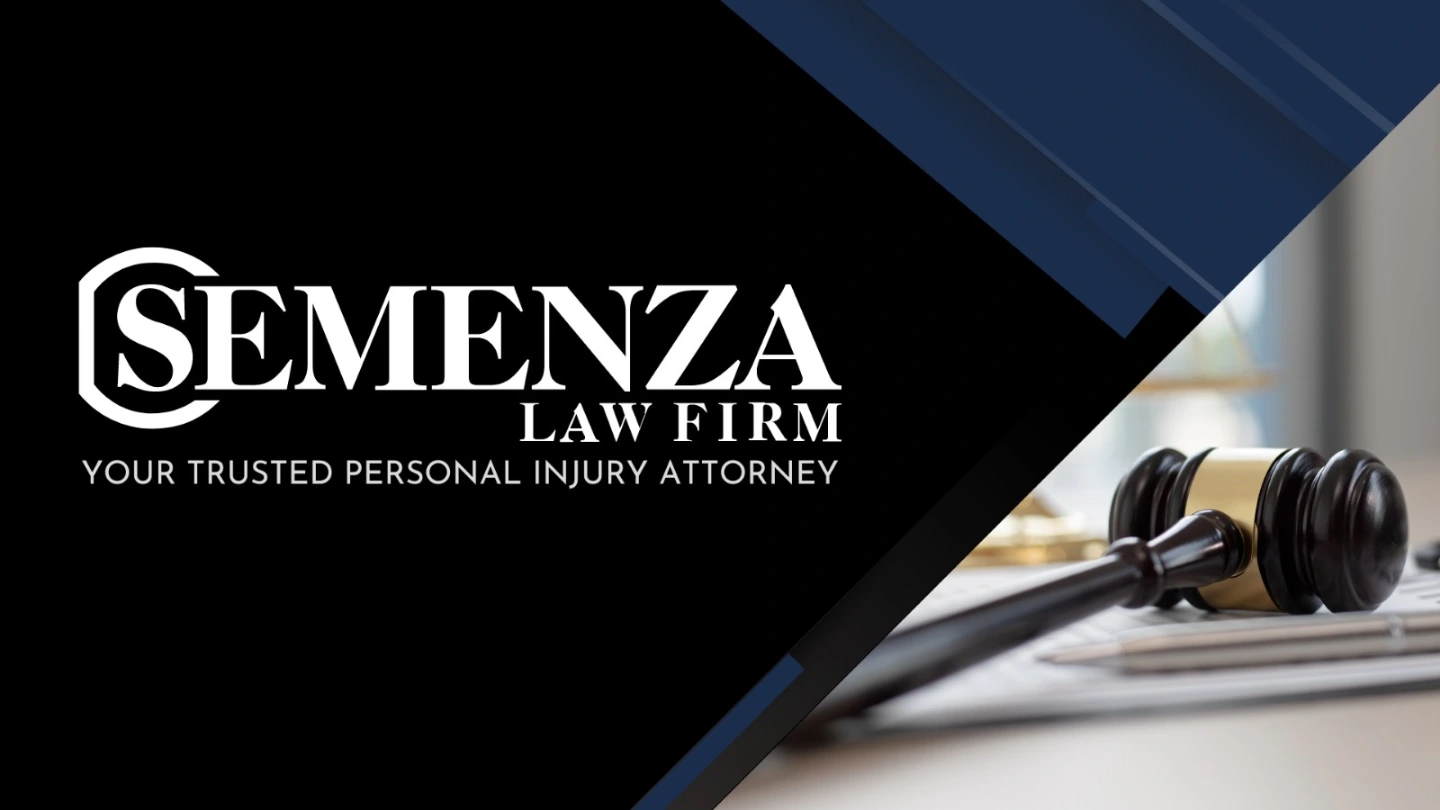Introduction
Workers’ compensation is a vital system designed to provide financial support and medical care to employees who suffer work-related injuries or illnesses. It ensures that workers receive the necessary benefits to cover medical expenses, lost wages, and rehabilitation costs. At Semenza Law Firm, our experienced workers’ comp lawyers are dedicated to helping injured workers navigate the complexities of the workers’ compensation system and secure the benefits they deserve.
Navigating a workers’ compensation claim can be challenging due to the intricate laws and procedures involved. An experienced workers’ comp lawyer can provide essential guidance, advocate on your behalf, and ensure that your rights are protected. At Semenza Law Firm, we have the expertise and commitment to provide robust legal representation in these cases.

Workers’ compensation is a state-mandated insurance program that provides benefits to employees who are injured or become ill due to their job. It is designed to cover medical expenses, lost wages, and other related costs, ensuring that workers do not suffer financial hardship due to work-related injuries.
Workers’ compensation claims are governed by state laws, which outline the rights and responsibilities of both employees and employers. These laws ensure that injured workers receive timely benefits while protecting employers from costly lawsuits.

Injuries caused by repetitive motions, such as carpal tunnel syndrome, are common in many industries. These injuries can significantly impact a worker's ability to perform their job.
Lifting, bending, and other physical activities can lead to severe back and neck injuries, often requiring extensive medical treatment and rehabilitation.
Traumatic brain injuries (TBIs) can result from falls, struck-by incidents, or other accidents. These injuries can have long-lasting effects on a worker's health and ability to work.
Exposure to hazardous substances or environments can lead to occupational diseases such as asbestosis, mesothelioma, and other respiratory conditions.
Workplace stress, anxiety, and depression are mental health issues that can result from job-related conditions or traumatic events. These conditions can be debilitating and require professional treatment.
Eligibility for workers' compensation benefits depends on the worker's employment status. Employees are typically covered, while independent contractors may not be eligible.
To qualify for workers' compensation, the injury or illness must be work-related. This means it must occur while performing job duties or as a result of job conditions.
Timely reporting and filing of workers' compensation claims are crucial. Missing these deadlines can result in denied claims and loss of benefits.

Workers’ compensation covers all necessary medical treatment related to the injury or illness, including doctor visits, surgeries, medications, and rehabilitation.
Workers’ compensation provides wage replacement benefits to compensate for lost income due to the inability to work. This includes temporary and permanent disability benefits.
Vocational rehabilitation benefits help injured workers retrain and find new employment if they are unable to return to their previous job.
If a worker suffers a permanent impairment, they may be eligible for permanent disability benefits to compensate for the long-term impact on their ability to work.
In the unfortunate event of a work-related death, workers’ compensation provides death benefits to the deceased worker’s dependents, including funeral expenses and financial support.
Employers may dispute claims or retaliate against workers who file for workers’ compensation. Protecting workers from retaliation and addressing employer disputes is essential.
Insurance companies may use tactics to minimize or deny claims. Having a skilled attorney can help counter these tactics and ensure fair treatment.
Navigating the process of returning to work, including light-duty assignments and workplace accommodations, can be challenging. Ensuring that workers’ rights are protected during this process is important.


At Semenza Law Firm, we specialize in workers' compensation cases. Our attorneys have extensive experience and a deep understanding of the laws and procedures involved.
We have a proven history of successfully representing clients in workers' compensation cases, securing significant benefits for injured workers. Our dedication to achieving favorable outcomes is reflected in our results.
We believe in providing personalized attention to each client. At Semenza Law Firm, you are not just another case; you are part of our family. We tailor our legal strategies to meet your unique needs and circumstances.

During the initial consultation, we will discuss the details of your case, answer any questions you may have, and provide an honest assessment of your legal options.

Our legal strategy is developed through a thorough assessment, gathering relevant information, understanding your objectives.

Our team ensures that all necessary documents are filed correctly and on time. We meticulously prepare applications and gather supporting evidence to strengthen your claim.

We will negotiate with employers and insurance companies on your behalf to secure a fair settlement. Our goal is to maximize your benefits while avoiding the need for a lengthy trial.

If a fair settlement cannot be reached, we are prepared to take your case to trial. Our experienced trial attorneys will present a compelling case to ensure your rights are protected.

At Semenza Law Firm, we work on a contingency fee basis for workers’ compensation cases. This means you do not pay any upfront fees, and we only get paid if we secure benefits for you.
Hiring an experienced workers’ compensation attorney significantly increases your chances of success. Our expertise and dedication provide valuable support in navigating the complex application and appeals process. Learn more about us today!
Seek medical attention, report the injury to your employer, document the incident, and contact a workers’ compensation attorney to discuss your legal options.
The statute of limitations for filing a workers’ compensation claim varies by state. It is important to act quickly to preserve evidence and protect your legal rights.
You may be entitled to medical benefits, wage replacement, vocational rehabilitation, permanent disability benefits, and death benefits.
This depends on state laws and your employer’s workers’ compensation insurance policy. Consult with a workers’ compensation attorney to understand your rights.
If your claim is denied, you have the right to appeal. Contact a workers’ compensation attorney to discuss your options and begin the appeals process.
Gather evidence such as medical records, witness statements, and documentation of the incident to prove that your injury is work-related.
It is illegal for employers to retaliate against employees for filing a workers’ compensation claim. If you experience retaliation, contact a workers’ compensation attorney immediately.
The appeals process involves several stages, including reconsideration, hearings, and appeals board review. Each stage requires careful preparation and legal knowledge.
The time it takes to receive benefits varies. Initial applications can take several weeks, and the appeals process can extend the timeline.
While it is possible to handle a claim on your own, having an experienced workers’ compensation attorney significantly increases your chances of securing a fair settlement.
Contact Semenza Law Firm today. We are here to provide you with the legal support and expertise you need to secure the justice and compensation you deserve.
Nationwide Service: Wherever you are, Semenza Law Firm is here to help. Call either of our locations, fill out a form, or email us at stephen@ssemenzalaw.com.





Quick Links
Ssemenza Law
We firmly believe that the internet should be available and accessible to anyone, and are committed to providing a website that is accessible to the widest possible audience, regardless of circumstance and ability.
To fulfill this, we aim to adhere as strictly as possible to the World Wide Web Consortium’s (W3C) Web Content Accessibility Guidelines 2.1 (WCAG 2.1) at the AA level. These guidelines explain how to make web content accessible to people with a wide array of disabilities. Complying with those guidelines helps us ensure that the website is accessible to all people: blind people, people with motor impairments, visual impairment, cognitive disabilities, and more.
This website utilizes various technologies that are meant to make it as accessible as possible at all times. We utilize an accessibility interface that allows persons with specific disabilities to adjust the website’s UI (user interface) and design it to their personal needs.
Additionally, the website utilizes an AI-based application that runs in the background and optimizes its accessibility level constantly. This application remediates the website’s HTML, adapts Its functionality and behavior for screen-readers used by the blind users, and for keyboard functions used by individuals with motor impairments.
If you’ve found a malfunction or have ideas for improvement, we’ll be happy to hear from you. You can reach out to the website’s operators by using the following email
Our website implements the ARIA attributes (Accessible Rich Internet Applications) technique, alongside various different behavioral changes, to ensure blind users visiting with screen-readers are able to read, comprehend, and enjoy the website’s functions. As soon as a user with a screen-reader enters your site, they immediately receive a prompt to enter the Screen-Reader Profile so they can browse and operate your site effectively. Here’s how our website covers some of the most important screen-reader requirements, alongside console screenshots of code examples:
Screen-reader optimization: we run a background process that learns the website’s components from top to bottom, to ensure ongoing compliance even when updating the website. In this process, we provide screen-readers with meaningful data using the ARIA set of attributes. For example, we provide accurate form labels; descriptions for actionable icons (social media icons, search icons, cart icons, etc.); validation guidance for form inputs; element roles such as buttons, menus, modal dialogues (popups), and others. Additionally, the background process scans all the website’s images and provides an accurate and meaningful image-object-recognition-based description as an ALT (alternate text) tag for images that are not described. It will also extract texts that are embedded within the image, using an OCR (optical character recognition) technology. To turn on screen-reader adjustments at any time, users need only to press the Alt+1 keyboard combination. Screen-reader users also get automatic announcements to turn the Screen-reader mode on as soon as they enter the website.
These adjustments are compatible with all popular screen readers, including JAWS and NVDA.
Keyboard navigation optimization: The background process also adjusts the website’s HTML, and adds various behaviors using JavaScript code to make the website operable by the keyboard. This includes the ability to navigate the website using the Tab and Shift+Tab keys, operate dropdowns with the arrow keys, close them with Esc, trigger buttons and links using the Enter key, navigate between radio and checkbox elements using the arrow keys, and fill them in with the Spacebar or Enter key.Additionally, keyboard users will find quick-navigation and content-skip menus, available at any time by clicking Alt+1, or as the first elements of the site while navigating with the keyboard. The background process also handles triggered popups by moving the keyboard focus towards them as soon as they appear, and not allow the focus drift outside it.
Users can also use shortcuts such as “M” (menus), “H” (headings), “F” (forms), “B” (buttons), and “G” (graphics) to jump to specific elements.
We aim to support the widest array of browsers and assistive technologies as possible, so our users can choose the best fitting tools for them, with as few limitations as possible. Therefore, we have worked very hard to be able to support all major systems that comprise over 95% of the user market share including Google Chrome, Mozilla Firefox, Apple Safari, Opera and Microsoft Edge, JAWS and NVDA (screen readers).
Despite our very best efforts to allow anybody to adjust the website to their needs. There may still be pages or sections that are not fully accessible, are in the process of becoming accessible, or are lacking an adequate technological solution to make them accessible. Still, we are continually improving our accessibility, adding, updating and improving its options and features, and developing and adopting new technologies. All this is meant to reach the optimal level of accessibility, following technological advancements. For any assistance, please reach out to